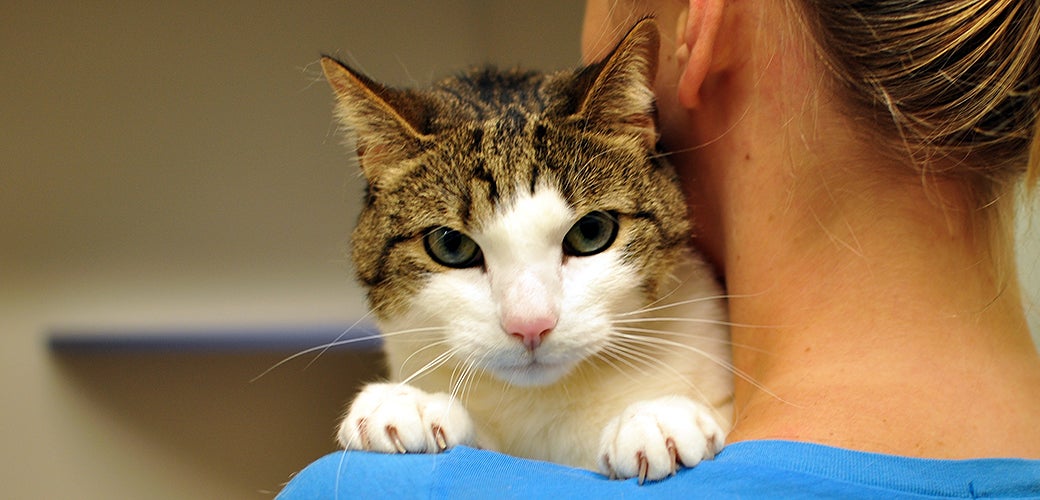Taking care of pets before and during storms
With more thunderstorms predicted for this weekend, it’s important for pet owners to take precautions against losing their precious pets.
Many dogs and cats suffer from “storm phobia,” which can range from pets that whine, pace, or hide, to more extreme behavior that can put pets at risk. Often, otherwise calm and docile animals who have never tried to “escape” their yards will climb fences or knock them down, or dig under fences in an attempt to escape stormy weather.
When the weather gets “loud,” local shelters and animal control see a major increase in calls to rescue pets wandering the streets or hiding in other peoples’ yards. Hundreds of dogs and cats find themselves in shelters and animal control facilities every year due to bad weather, that is, if they’re lucky. Others are severely injured in their attempts to escape, are hit by cars, or disappear completely.
If you want to keep your pets safe and secure during bad weather, here a some things to do:
1. Bring all pets indoors before bad weather hits. The safest place for pets is indoors when a storm hits. Many times, even the most secure outdoor enclosure can be breached by a terrified animal. Animals have been known to cause themselves severe injury in their fight to escape an outdoor enclosure. Others run blindly into traffic and are killed.
2. Be sure your pet is always wearing identification tags. Even if pets go outdoors for just a few minutes to relieve themselves during a storm, a bolt of lightning can send them scrambling over or under a fence. Pets that have collars and identification tags are more likely to find their way back to their owners quickly.
3. Be sure your pet is microchipped. Although collars with ID tags are the quickest way for anyone finding a lost pet to get it back to its owner, sometimes in an animal’s panic to get away from a storm, collars come off. Microchipping allows any veterinarian, shelter, or animal control facility to get an owner’s contact information and return the pet. Be sure that your microchip is registered. Too often, microchips have either never been registered, or the registration information is not up to date.
4. If your pet gets lost, start your search by contacting your local Animal Control or your local shelter immediately. The volunteers and staff are always surprised that the facility is the last place people seem to look for their pets. They’ve had owners come in several days to several weeks after their pet goes missing. It’s critical that pet owners begin their search with local animal control facilities and shelters. It’s also a good idea to contact local veterinary offices, put up signs in the neighborhood, and post the pet’s information on social media.
For more information about keeping your pet from being lost, tips for finding a lost pet, or to report a lost or found pet, the ASPCA’s recommendations for finding a lost pet at:Finding a Lost Pet

